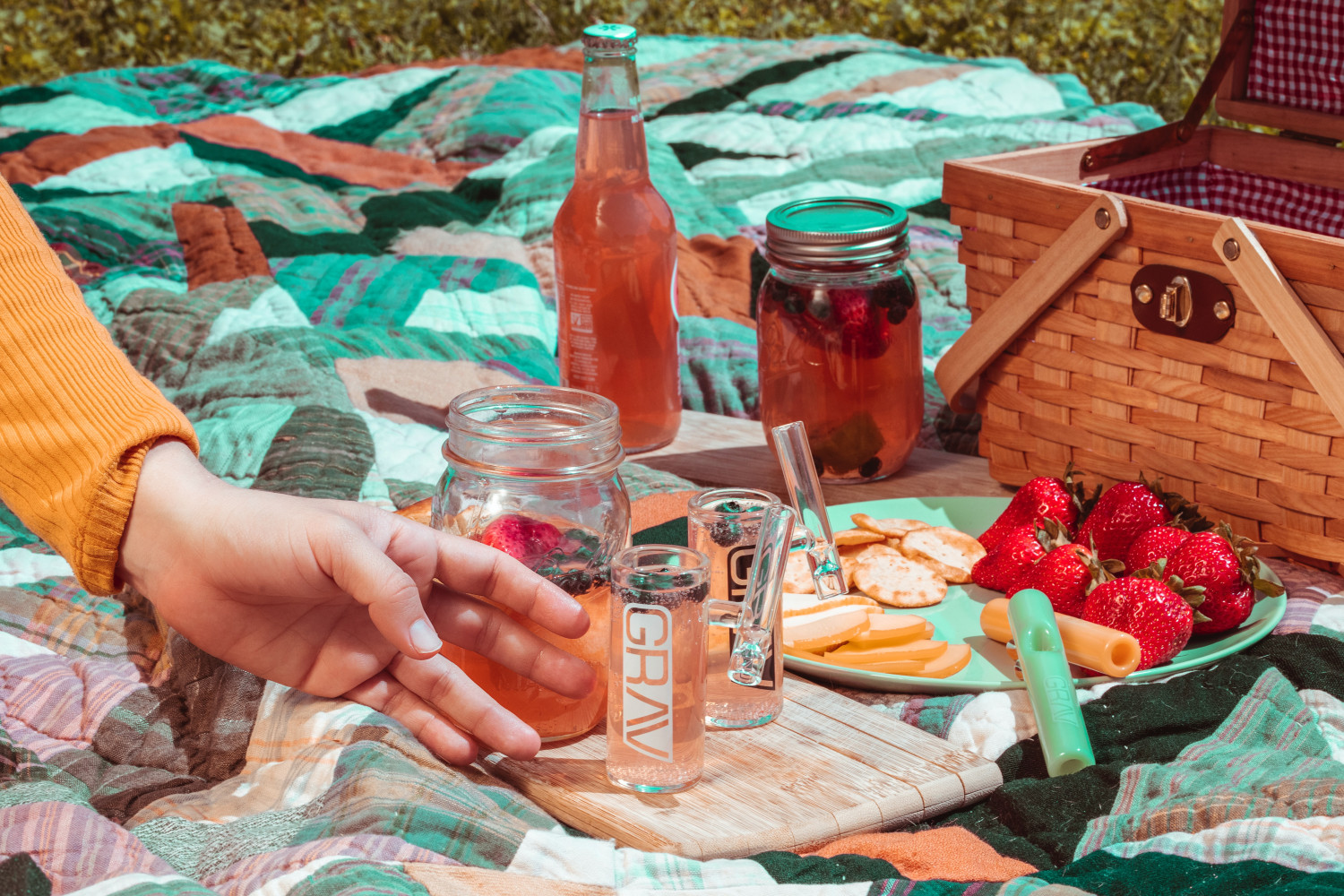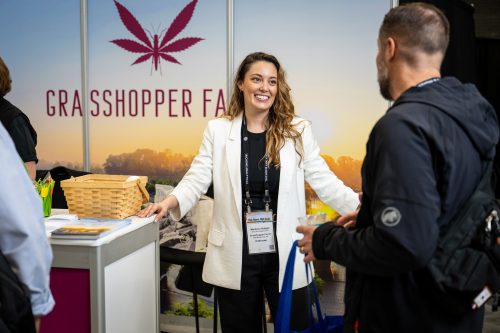Sure, it’s easy enough to go pick up a pack of edibles from your local dispensary. But is a visit to the store as fun and hands-on as cooking at home? Probably not.
In my opinion, getting to play with different cannabis recipes and potencies, in your own space, is where it’s at. Whether you already have a knack for cooking, or you’re new to the chef game, this simple guide will help with the basics of cooking with cannabis.
Not only can you get past that 10mg THC standard for pre-made edibles and adjust the potency to your own limits. But, whipping up your own favorite cannabis-infused treats at home creates a very personalized cannabis experience. You’re a part of the whole process.

Incorporating THC and CBD Into Your Own Kitchen
Infusing recipes at home can also really change the game for consumers with dietary restrictions and allergies. And we can’t forget about that sense of nostalgia that comes from baking heavy-hitting weed cookies at home.
Now, let’s get started with some of those details. There are some quintessential pieces to start incorporating cannabis into your kitchen. Do you want to cook with flower, CBD or THC, oils, or kief? Do you want your edibles to taste like weed? Or maybe you don’t know what any of that really means. That’s just fine too. Let’s try and clear things up a bit.
Cooking With Flower: Making Cannabutter or Cannabis Infused Cooking Oil
When cooking with cannabis flower, you’re really making yourself a part of the whole cooking process. From purchase, to extraction, to consumption- you’ve got eyes on everything that goes into your infused dish. While the process of extraction from flower can be a bit involved, it really provides that authentic edible experience.
Crafting canna-butter and canna-oil in your own kitchen is a very wholesome experience for a stoner, in my opinion. You can find that perfect blend of psycho-active THC and body-soothing CBD, infused into your favorite treats.

There are some key points to note before getting started. The key thing to remember- to actually get a buzz from cooking with raw flower, the cannabinoids must be activated with heat.
To make the cannabinoids bioavailable, the THC and CBD have to go through a decarboxylation process. The heating process activates the cannabinoids by making them into their neutral, non-acidic form. In more simple terms, raw cannabis flower will likely get you less stoned than a heat-activated flower.
Once you cook down your cannabis-infused butter or oil, you can start adding it to your favorite recipes. Or maybe you’re like me, and keep the canna-butter in the fridge for an occasional infused bulletproof coffee. Either way, you can find a recipe to get started on your own homemade-cannabutter here.
Cooking With Kief: Less Plant Matter Makes For Less Hassle

Like cooking with full flower, making edibles at home using kief requires a decarboxylation. Decarboxylation activates the cannabinoids- the THC, CBD, etc.. Where the process of cooking kief and flower differ, is in the presence of plant matter. With flower, you have to heat and extract, then strain the oils from the cannabis leaves. With kief, the lack of plant matter helps it easily dissolve into the fats and oils.
Recipes suggest a slow oven roast at 300℉, for about 7 minutes, then adding to melted butter and heating only until dissolved. Using kief really cuts down on time spent making the actual canna-butter. And kief definitely does not lack in the potency department. Leaving more time for the fun part, infusing your favorite homemade meals with cannabis.
Cooking With Cannabis Oil: RSO vs. Distillates

Activated Distillate Oil
Cooking with already activated concentrate oils helps you skip that whole step of cannabinoid decarboxylation. You won’t have to worry about canna-butter with strong plant flavors or burn kief canna-butter.
Activated cannabis distillate oils have gone through a further distillation process following extraction to remove impurities and excess products. This means, they’re ready to use, with fewer terpenes remaining in the concentrate.
Distillate oils are solvent-free, which makes for a pure product. In my experience, using distillates when making edibles at home seems to give me the most consistent results in regard to potency and taste.
Without the presence of terpenes, the oil is going to have less of a distinct flavor profile. The purity of distillates can have little to no taste, rather than the distinct cannabis taste of canna-butter. This leaves you with more room to perfect the flavors of your infused recipes. No more working to hide the flavor profile of the cannabis, or dealing with the process of heat activation. It’s really a win-win, in my opinion.
Rick Simpson Oil (RSO)
Like cooking with activated distillates, RSO’s are ready to use from purchase. You can add RSO straight to your baked goods or infused recipes with ease. Like cooking with flower, making edibles with RSO can also present the cannabis flavor. The activated concentrate oil comes in one gram syringes, making doses with cooking easy to measure.
If you decide to use RSO for your homemade cannabis infusions, you’ll likely end up with some strong treats. A beginners dose of RSO looks roughly the size of a grain of rice, in my experience. As a budtender, I always encourage people to start low and go slow when consuming RSO (and edibles in general).
If you haven’t heard of Rick Simpson Oil, here’s a little introduction. Rick Simpson developed this whole-plant, high potency oil specifically for himself, and other cancer patients. The oil is extracted from the whole cannabis plant using ethanol, leaving a dark and sticky oil with high THC percentages. The whole-plant extraction method is known for its medicinal benefits.
When cooking with distillate cannabis oils and RSO, you’ll also have a bit more clarity and freedom when playing with potency. When you purchase distillate oil or RSO from a dispensary, measurements and potency are clearly marked. Generally, a needleless syringe of activated distillate or RSO will have 10 clearly marked doses.
There’s a lot involved in the process of cooking edibles at home, but it’s pretty easy to navigate. Trial and error is a really good way to learn what you’re looking for in your quest for the perfect home-cooked infusion. Know your cannabis ingredients, double-check those potency ratios, and don’t forget to heat-activate your flower before making those brownies.
Some Common Mistakes When Cooking With Cannabis
- Not using heat to activate cannabinoids: Cooking with raw cannabis won’t get you stoned. Slowly activate those cannabinoids in fats and oils prior to cooking.
- Using too much heat: Burning your canna-butter and degrading the cannabinoids. While higher heat will decarboxylate the cannabis quicker, you’re also more likely to burn the oils. Burnt butter or oil, means the cannabinoids may lose their potency.
- Grinding your flower into a powder: Your canna-butter will be more green and grassy. No, that doesn’t mean it’s more potent. It’s from all the plant matter that has seeped through your cheesecloth.
- Not paying attention to ratios and potency: Either you’re not stoned at all, or you’re accidentally asleep for a few days. I strongly suggest paying attention to the numbers and rations when cooking with cannabis.









